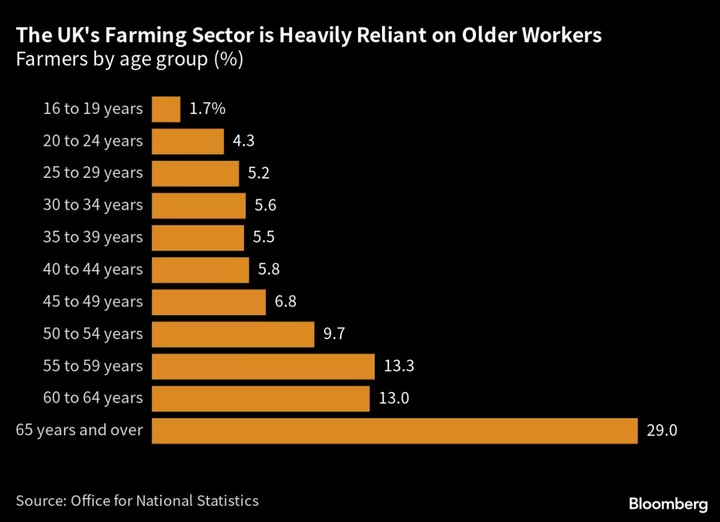Britain’s farming, truck driving and bed & breakfast industries are among the most reliant on a silver-flecked workforce on the brink of retirement, putting them at risk of future shortages unless they find an influx of younger staff.
More than half of the UK’s farmers are aged 55 and older, including 29% over 65, data from the Office for National Statistics showed Wednesday. Half of truck drivers are older than 50, and a number of sectors — including B&B owners, undertakers and elected representatives, such as local councilors and members of Parliament — also skew much older than the wider workforce.
The figure laid bare the huge challenge facing many industries from Britain’s aging population as businesses already grapple with widespread skill shortages. More than 500,000 people — many of them over 50 — dropped out of the workforce during the pandemic, forcing companies to scramble to find the staff they need to deliver goods and services of all kinds.
The trend is contributing to Britain’s stubbornly high inflation rate, adding to pressures on the Bank of England to keep raising the benchmark lending rate.
A struggle to find workers has already hampered activity in many of the sectors with the oldest workers, triggering shortages and snarling supply chains. The issue is particularly acute in the food industry, where double-digit price increases have lingered for the longest period in decades and supermarkets are having trouble restocking their shelves.
The National Farmers’ Union said the agricultural sector is suffering from a “growing skills gap” that must be addressed by exposing young generations to working in the food industry.
“We all know that producing food can be challenging and exciting, but it is not always depicted as a viable career path for young people,” a NFU spokesperson said.
“It is a big issue, but it’s not a new issue,” said Rod McKenzie, executive director of communications at the Road Haulage Association, which represents truck drivers. “Drivers have always tended to skew older. The key to it is that you are bringing in younger drivers at the bottom, as the older drivers retire.”
The UK government was forced to take action in 2021 when a shortage of about 100,000 drivers for heavy goods vehicles caused widespread supply chain disruption, including to petrol stations, supermarkets and restaurants.
McKenzie said it’s important that government-backed skills bootcamps to train up drivers, which were introduced following the crisis, are kept to draw enough younger workers into the sector.
The hospitality and retail sectors — which have also been exposed to staff shortages — are among the most dependent on the supply of young workers, the data revealed. Roughly half of waiters and waitresses, bar staff and coffee shop workers are aged 16 to 24, but they make up just 10% of the wider workforce.
Many of the roles most exposed to younger workers are typically part-time and seasonal jobs as they offer “stop gaps” for those that recently left education, the ONS said. It added that their prevalence in these sectors meant they were more likely to have been vulnerable to job losses in the pandemic.

